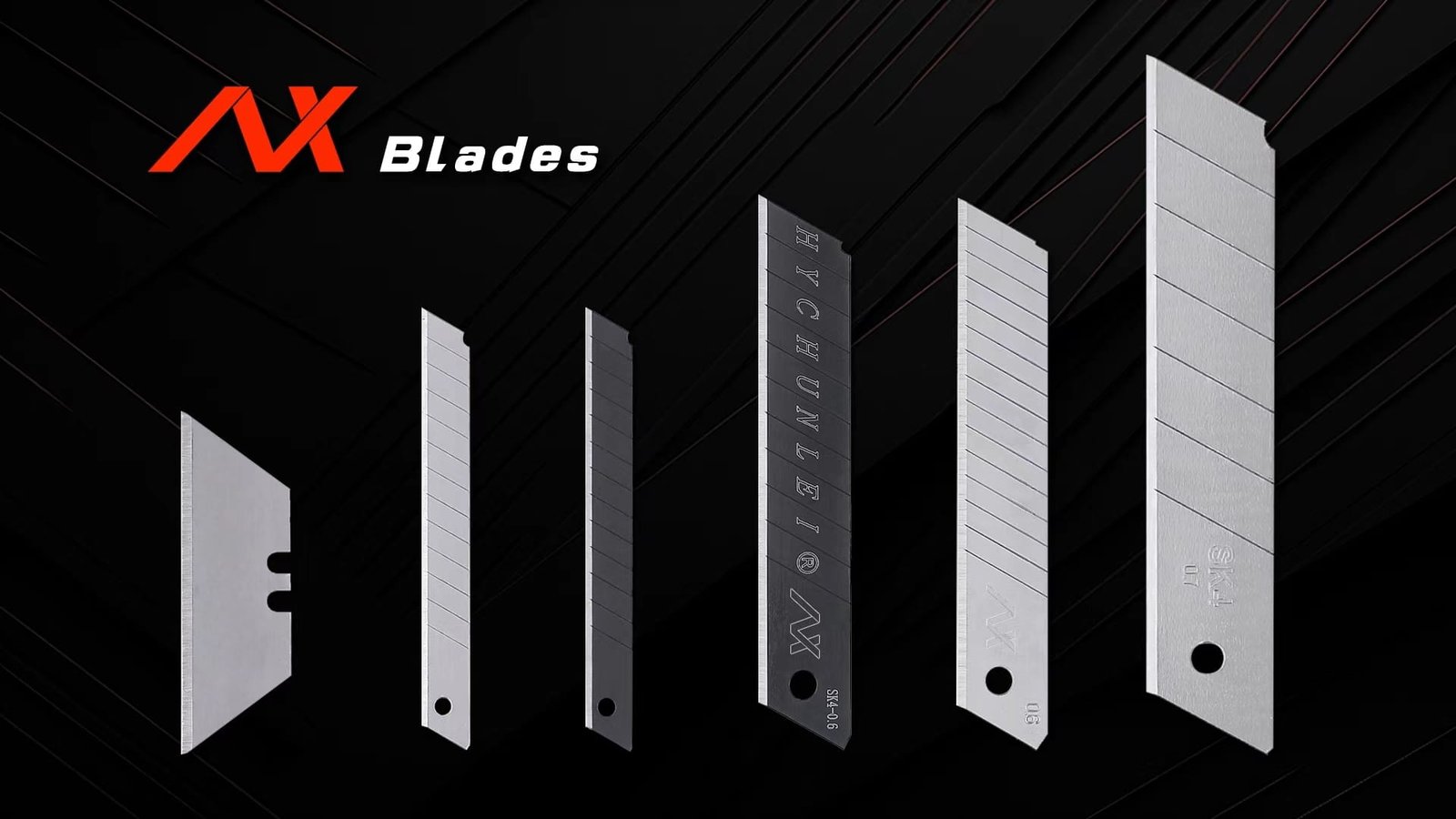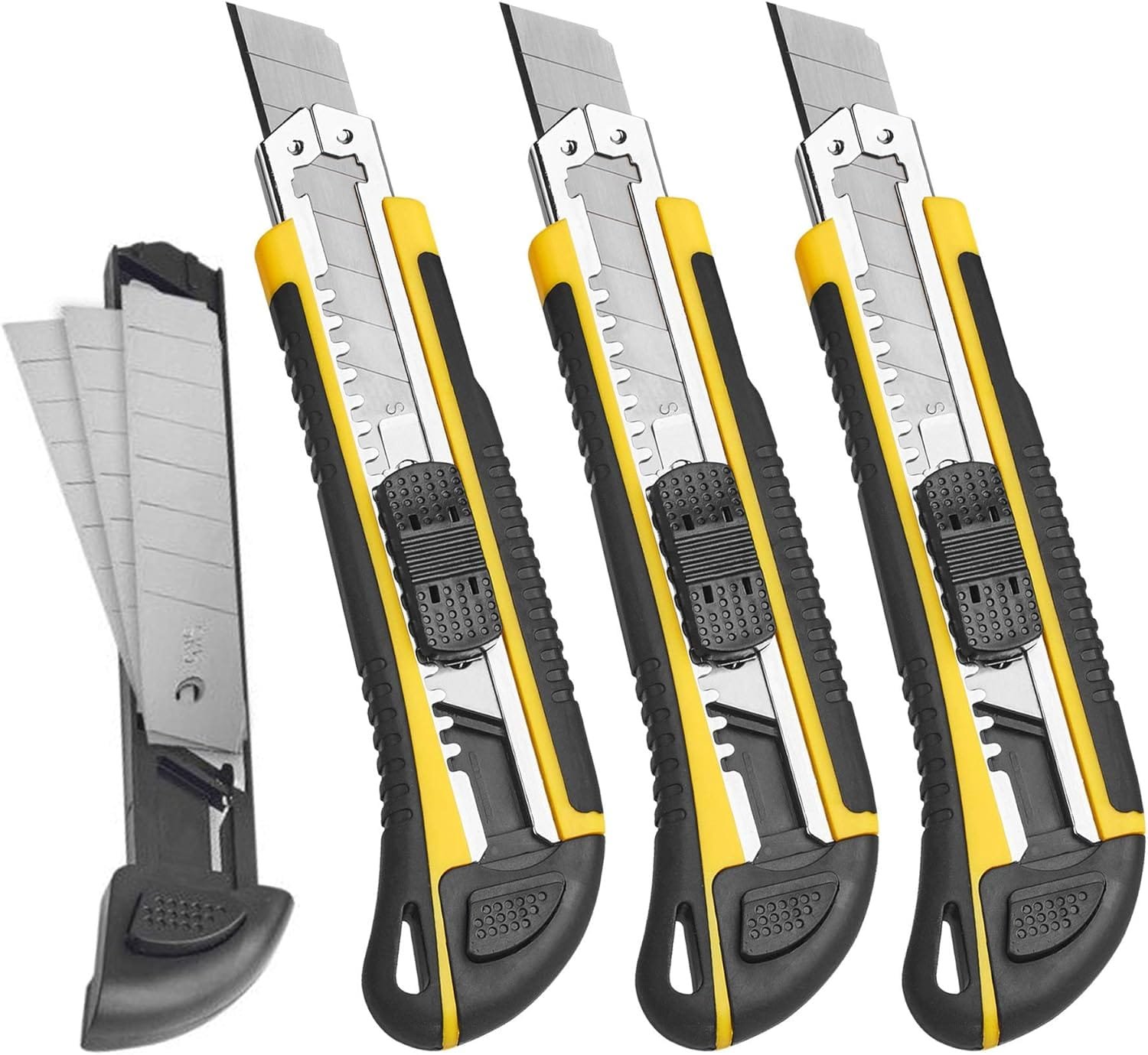Utility knives are essential tools in various industries, from construction to crafting. However, like any tool, they require maintenance, particularly when it comes to replacing the blade. Knowing when to change the blade of a utility knife is crucial for safety and efficiency. This article will explore the signs that indicate it’s time to replace your utility knife blade, the implications of using a dull blade, best practices for maintenance and replacement, and additional tips for maximizing the lifespan of your utility knife.
Understanding Utility Knife Blades
Utility knife blades are designed for versatility and durability. They can cut through various materials, including cardboard, plastic, wood, and more. However, over time and with regular use, these blades can become dull or damaged. As a leading utility knife manufacturer, understanding the lifecycle of your utility knife blade can help you maintain optimal performance.

Types of Utility Knife Blades
Before we delve into when to replace your utility knife blade, it’s essential to understand the different types of blades available:
1. Standard Blades: These are the most common type of utility knife blades. They are versatile and suitable for general-purpose cutting tasks.
2. Hook Blades: Designed for specific tasks such as cutting carpet or roofing materials. The curved shape allows for precise cuts without damaging underlying surfaces.
3. Snap-Off Blades: These blades have segments that can be snapped off when they become dull, providing a fresh edge without needing a complete replacement.
4. Specialty Blades: Some utility knives come with specialty blades designed for specific materials or tasks, such as scoring glass or cutting through thicker materials.
Understanding these types can help you choose the right blade for your needs and recognize when it’s time to replace them.

Signs That Indicate It’s Time to Replace Your Utility Knife Blade
1. Visible Wear and Tear
- If your utility knife blade shows visible signs of wear such as nicks, dents, or chips, it’s time to replace it. These imperfections can lead to ineffective cutting and increase the risk of injury.
2. Difficulty Cutting
- When you find yourself exerting significant effort to cut through materials that were previously easy to handle, it indicates that the blade is dull and needs changing. A sharp blade is essential for smooth cutting.
3. Slippery or Jagged Cuts
- A sharp blade produces clean cuts with minimal resistance. If your knife is creating uneven or jagged cuts, consider replacing the blade immediately.
4. Blade Discoloration
- If the blade has become discolored or rusty, it’s no longer safe to use and should be replaced immediately. Rust can compromise the integrity of the blade.
5. Blade Doesn’t Extend or Retract Properly
- For retractable utility knives, if you experience difficulty extending or retracting the blade, it may be bent or damaged and should be replaced.
6. Frequent Use
- If you use your utility knife frequently—especially in heavy-duty applications—it’s advisable to replace the blade every few weeks or months depending on usage intensity.
The Risks of Using a Dull Blade
Using a dull utility knife blade poses several risks:
- Increased Risk of Injury: A dull blade requires more force to cut through materials, increasing the likelihood of slips and accidents.
- Poor Cutting Performance: Dull blades can lead to jagged edges and uneven cuts, affecting the quality of your work.
- Tool Damage: Excessive force on a dull blade can damage both the blade and the utility knife itself.
- Material Damage: Using a dull blade may cause more damage to the material being cut than intended, leading to wasted resources and increased costs.
How Often Should You Replace Your Utility Knife Blade?
The frequency of replacing your utility knife blade depends on several factors:
- Usage Frequency: For heavy users, changing blades every 1-2 weeks is recommended.
- Material Being Cut: Cutting tougher materials will dull blades faster than cutting softer ones.
- Blade Quality: Higher-quality blades may last longer than cheaper alternatives.
For example, if you’re using a utility knife daily in a construction environment where you’re cutting through thick cardboard or plastic sheeting, you might need to change your blade weekly. Conversely, if you’re using it occasionally for light tasks at home, you might only need to change it every few months.

Best Practices for Maintaining Your Utility Knife
To prolong the life of your utility knife and its blades:
1. Regular Inspection
- Inspect your utility knife regularly for any signs of wear or damage. Check the sharpness and overall functionality before each use.
2. Proper Cleaning
- Clean your utility knife after each use to remove debris that can dull blades. Use warm soapy water and avoid abrasive materials that could scratch the surface.
Cleaning Utility Knife
- Apply lubricant to moving parts such as sliders and locks to ensure smooth operation.
4. Safe Storage
- Store your utility knife in a dry place away from moisture. Consider using protective sheaths or cases to prevent accidental cuts during storage.
5. Use Quality Replacement Blades
- Always opt for high-quality replacement blades from reputable manufacturers to ensure compatibility and performance.
How to Replace the Blade in a Utility Knife
Replacing the blade in a utility knife is a straightforward process:
1. Gather Materials: Have a new utility knife blade ready along with cut-resistant gloves.
2. Open the Knife: Depending on your model, unlock or open the knife.
3. Remove Old Blade: Carefully remove the old blade following manufacturer instructions.
4. Insert New Blade: Place the new blade securely into position.
5. Secure Everything Back Together: Close any compartments and test the locking mechanism before use.
Replacing Utility Knife Blade
Additional Tips for Maximizing Your Utility Knife’s Lifespan
1. Choose the Right Blade for Your Task:
- Different tasks require different types of blades (e.g., hook blades for carpets). Using an appropriate blade will reduce wear and tear.
2. Avoid Excessive Force:
- Let the sharpness of your blade do most of the work; applying excessive force can lead to damage.
3. Keep Your Workspace Organized:
- A clutter-free workspace reduces accidents and helps you maintain focus while using sharp tools like utility knives.
4. Educate Yourself on Safe Practices:
- Familiarize yourself with safety practices related to using utility knives; this knowledge will help prevent injuries during operation.
5. Utilize Manufacturer Resources:
- As a trusted utility knife manufacturer, we provide guidelines on proper usage and maintenance that can help extend your tool’s life.

Conclusion
Knowing when to replace the blade of a utility knife is essential for maintaining safety and efficiency in your work environment. Regular inspections and awareness of signs indicating wear will help ensure that you always have a sharp tool at hand. As a trusted utility knife manufacturer, we emphasize quality in our products to meet your cutting needs effectively while ensuring user safety.
Frequently Asked Questions (FAQs)
1. How often should I replace my utility knife blade?
- It depends on usage; for heavy use, consider changing every 1-2 weeks; for occasional tasks, every 1-2 months.
2. What are signs that my utility knife blade needs replacing?
- Look for visible wear, difficulty cutting, jagged cuts, discoloration, or rust on the blade.
3. Can I use any type of replacement blade with my utility knife?
- No, always use blades specifically designed for your model to ensure safety and proper function.
4. What should I do if my utility knife isn’t cutting properly?
- Check if the blade is dull or damaged; if so, replace it with a new one.
5. How do I safely dispose of old utility knife blades?
- Use puncture-resistant containers specifically designed for used blades to prevent injuries during disposal.

